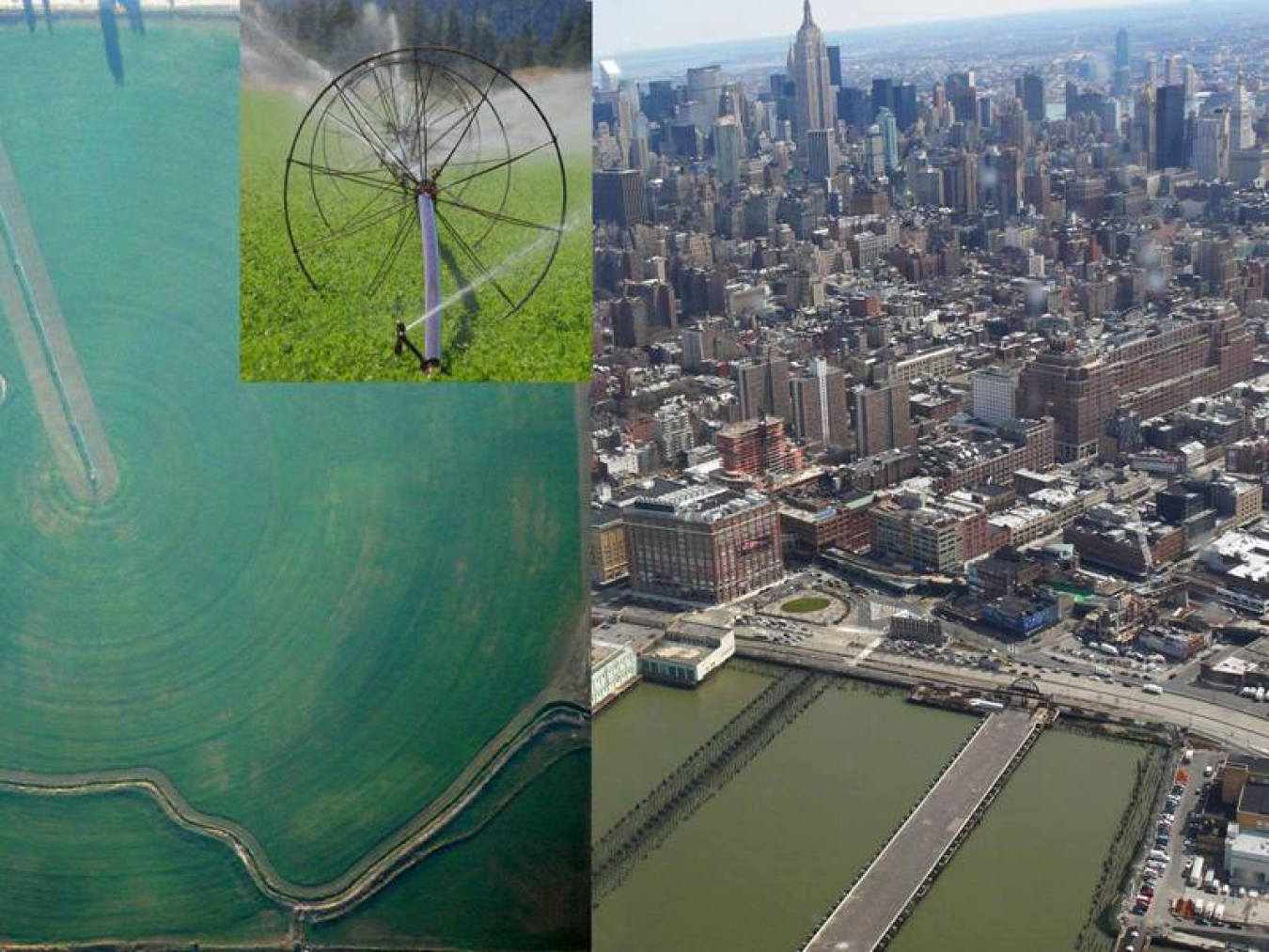
The Science
Scientists know that urbanization and irrigation can significantly influence rainfall. However, they don’t fully know how these effects vary among different types of rain. Researchers investigated how large-scale urbanization and irrigation in the United States affect the three dominant types of summer precipitation in the mid-Atlantic region. These include mesoscale convective system (MCS), isolated deep convection (IDC), and non-convective (NC) precipitation. MCS precipitation is from large systems of thunderstorms. IDC precipitation is from isolated thunderstorms that result from the movement of air from the lower to the upper atmosphere. NC precipitation is rain that does not result from thunderstorms and is typically less intense but lasts longer and produces a steadier rainfall. The researchers found that urbanization suppresses all three types of precipitation. In contrast, irrigation enhances NC and IDC precipitation. Irrigation has varied influences on the mid-Atlantic precipitation produced by MCSs. The specific influence depends on whether an MCS formed locally or remotely.
The Impact
The contrasting influences of large-scale irrigation on locally and remotely initiated MCS precipitation highlight the complexity of precipitation. The findings also show the range of effects that changes in land use and land cover can have on precipitation. Finally, this study highlights the importance of understanding the diverse effects of human activities on precipitation. In regions such as the mid-Atlantic, many types of rain contribute to summer rainfall. This means that changes in total rain amount and the contributions of different rain types have important implications for water resources and their management.
Summary
Researchers from Pacific Northwest National Laboratory and the Indian Institute of Technology–Madras conducted convection-permitting regional model simulations with and without urbanization or irrigation. They used the simulations to investigate how large-scale urbanization and irrigation in the United States east of the Rocky Mountains affect summer precipitation in the highly populated mid-Atlantic region. They applied a feature tracking algorithm to classify three types of precipitation (MCS, IDC, and NC) and examined the effects of large-scale urbanization and irrigation on each rain type.
The researchers found that urbanization suppresses all three types of precipitation in the mid-Atlantic region by reducing water vapor and atmospheric instability. In contrast, irrigation enhances IDC, NC, and locally initiated MCS precipitation. The irrigation also suppresses rainfall produced by MCSs initiated in the Great Plains and Midwest, producing conflicting effects on MCS precipitation. The surface cooling due to irrigation induces a high-pressure anomaly at sea level, which is compensated by a mid-level low-pressure anomaly. The mid-level pressure anomaly then weakens the prevailing mid-level westerly wind over the Midwest and the mid-Atlantic region, which hinders the eastward movement of MCSs toward the mid-Atlantic region.
Contact
L. Ruby Leung
Pacific Northwest National Laboratory
[email protected]
Funding
This research was supported by the Department of Energy Office of Science, Biological and Environmental Research as part of the Regional and Global Model Analysis (RGMA) program area through the collaborative, multi-program Integrated Coastal Modeling project. The research was also partly supported by the HyperFACETS project jointly funded by the RGMA and MultiSector Dynamics program areas and the Water Cycle and Climate Extremes Modeling Scientific Focus Area funded by RGMA. The research used computational resources from the National Energy Research Scientific Computing Center, a Department of Energy user facility supported by the Office of Science under Contract DE-AC02-05CH11231.
Publications
Li, J., et al., Impacts of large-scale urbanization and irrigation on summer precipitation in the Mid-Atlantic region of the United States. Geophysical Research Letters, 49, 8 (2022), e2022GL097845. [DOI: 10.1029/2022GL097845]
Related Links
For more information, see the Department of Energy Office of Science Earth & Environmental Systems Modeling program’s Integrated Coastal Modeling (ICoM), Water Cycle and Climate Extremes Modeling, and A Framework for Improving Analysis and Modeling of Earth System and Intersectoral Dynamics at Regional Scales (HyperFACETS) projects.

